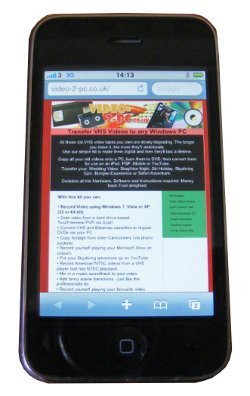On page 20 of the New Scientist’s 3rd April 2010 edition you’ll see an article entitled ‘Search’s dirty secret’ by James Clarage – it’s all about how much power each Google search uses. The same as leaving a 100-watt light bulb on for an hour, according to James. I just hope this isn’t an April-Fools joke…
I was sat up reading the article in bed, when a little 100-watt light bulb came on in my own head! That can’t be right, I thought…
According to the article, ‘IT research firm Gartner estimates that Google’s data centres contain nearly a million servers, each drawing about 1 kilowatt of electricity. So every hour Google’s engine burns through 1 million kilowatt-hours of electricity. Google serves up approximately 10 million search results per hour, so one search has the same energy cost as turning on a 100-watt light bulb for an hour’… Sure!
That would mean that each of those servers only does 10 searches per hour, or 240 searches in 24 hours, times 1 million servers. That’s just silly.
In fact, I found that Google process 87.8 billion searches a month (see links below), which is about 2.88 billion-a-day. So that means the number of searches quoted in the article is less than 10% of the real total – so now we’re down to a 10 watt light bulb on for an hour. But wait , there’s more…
I remembered from previous reading (might be the Google biography) that Google use regular PC boxes for each of those servers. In fact they’re even tighter with their money than that. The article states that each Google server uses 1000 watts per hour, when in fact each server only has a 300 watt PSU in it (see links below), and can only supply a maximum load of 280W. The Google servers feature a Magnatek 300W PSU with only a 12V supply (the 5v stepdown being done by the mainboard or a separate inverter circuit, instead of the PSU), that is supplemented by a 12V battery (not a UPS, just a battery). This makes each PC very efficient. Each of the PCs has a custom Gigabyte motherboard with twin Xeon processors, 8GB of RAM, and 2x 1TB SATA Hard Drives – this server can easily process 240 searches a second, never mind a day.
Also, these servers are each 3 inches high and stored in regular racks. Each of these racks is housed in a standard ‘1AAA’ shipping container. Each container holds 1160 PCs. They can be moved around by crane. Google have thoroughly researched how to make each server as energy efficient as possible – after all, it’s in their financial interest if they have a million of them.
Anyway, the upshot of the 300W PSU and various other calculations is that each PC is really only using only 250 watts of power per hour. So our 100-watt lighbulb, that became a 10-watt lightbulb, now becomes a hypothetical 2.5-watt lightbulb.
It’s even better than that because Google aren’t really using a million servers all for search. Those servers are crunching through uploaded YouTube videos and all sorts of other really processor-intensive work. Spewing out a page of text-based search results is easy for these boxes. It’s also worth mentioning that these boxes are running a highly tweaked version of Linux, so there’s very little OS-bloat, it isn’t like they’re running Windows.
So, back to the original 100-watt light bulb for an hour claim. How much electricity would that be? Well, in the UK right now a kWh of electricty costs about 10p, which is enough to run that light bulb for 10 hours – or 1p per hour. But as we already pointed out that light bulb is really 2.5 watt and not 100 watt. Plus, when you factor in how many searches each server can really run it’s loads less. If they say a server can run 10 searches an hour and it can actually run 10 searches every second, then that’s 3600 times more searches per hour.
How about Google’s electricity bill? Well, if each server uses 250 watts of electricity per hour (including external cooling), then that’s 10p every four hours (at 10p per kWh). So in a day a Google server will use 60p worth of electricity, at most. Lets assume they’re on a bulk-user tariff and not stuck with a domestic Manweb tariff. Let’s round it down to 50p and apply that to one million servers. That’s £500,000 per day in electricity costs, or £182 million per year to keep a million servers running. But don’t feel too sorry for them. Advertising revenue in 2009 was almost $23 billion US dollars (a billion being one thousand million).
Google Facts & Figures:
http://royal.pingdom.com/2010/02/24/google-facts-and-figures-massive-infographic/
Inside a Google server:
http://news.cnet.com/8301-1001_3-10209580-92.html
Close up photo of a server:
http://i.i.com.com/cnwk.1d/i/bto/20090401/GoogleServerLarge.jpg?tag=mncol;txt
Here’s another interesting page about Google, although I think it’s all 20x bigger now…
http://www.linesave.co.uk/google_search_engine.html
http://www.newscientist.com/article/mg20627546.700-search-engines-dirty-secret.html

